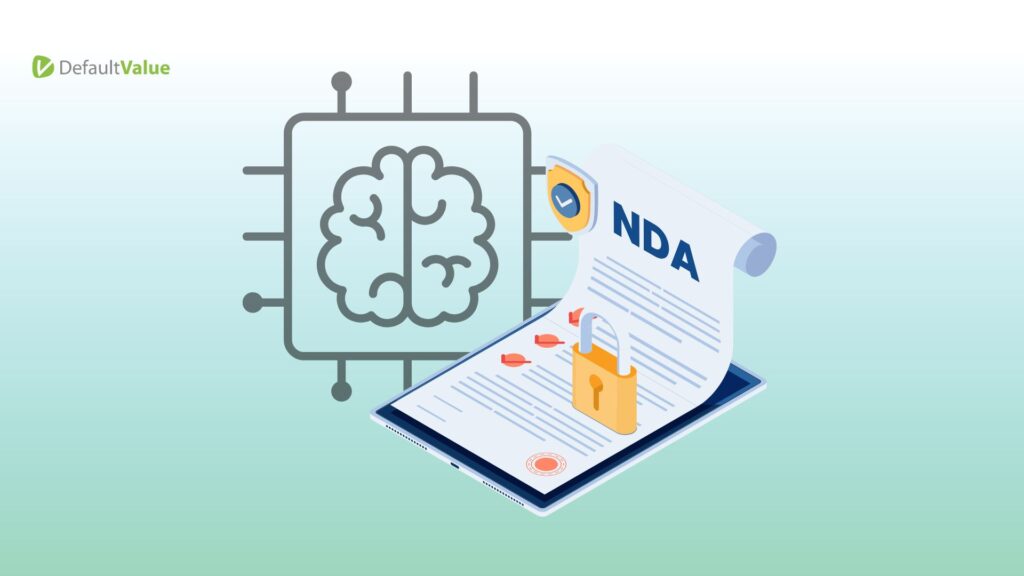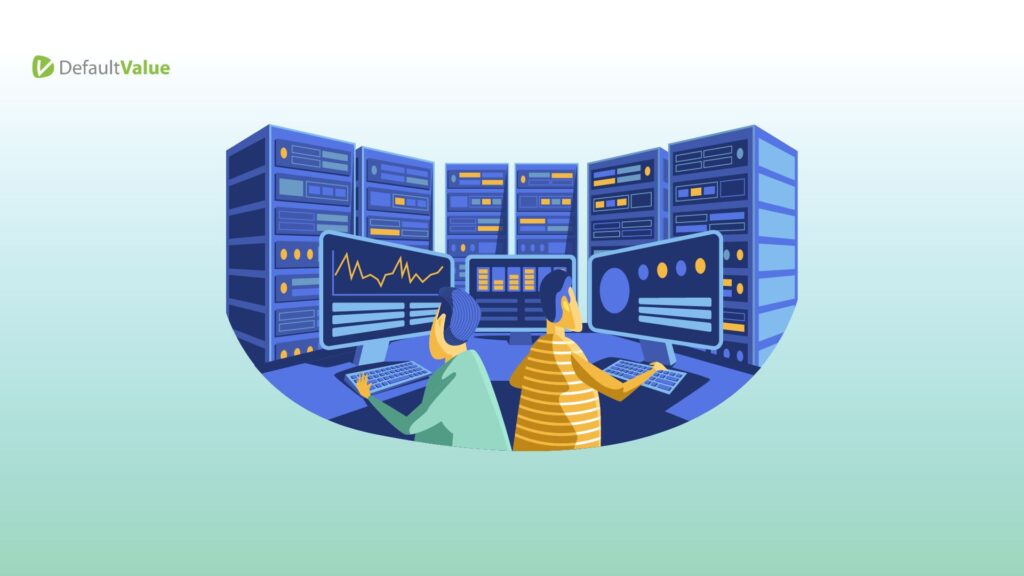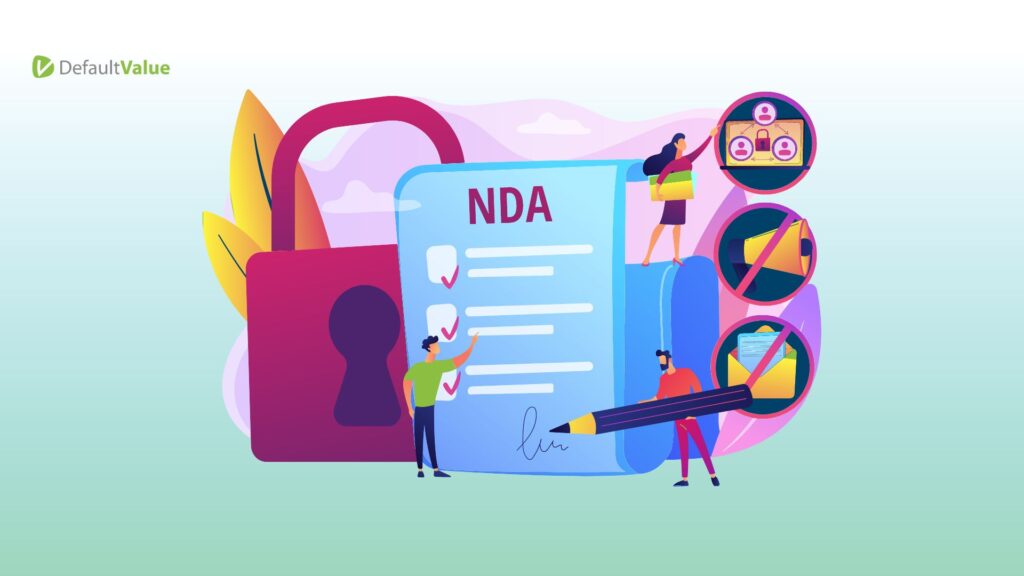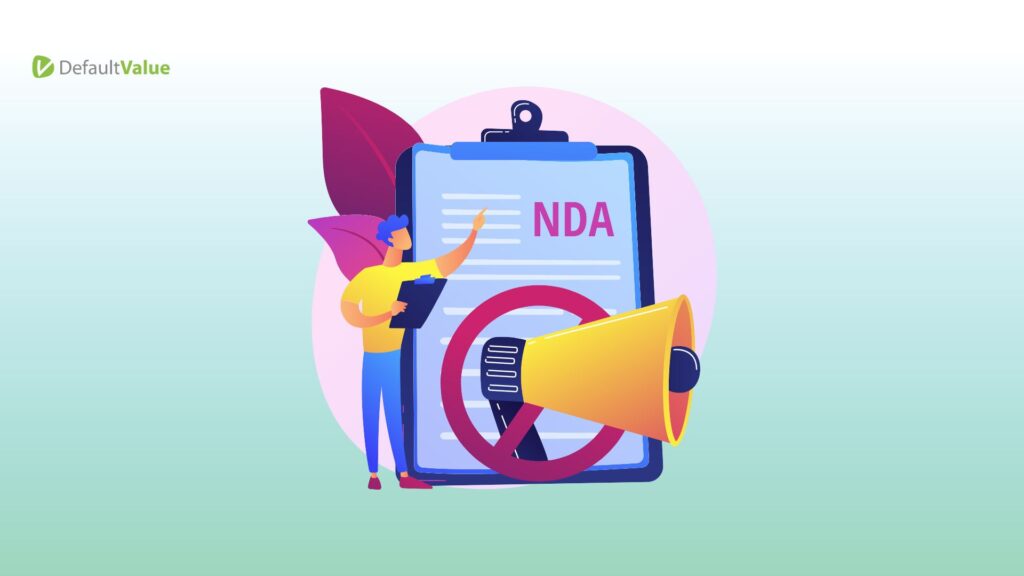Understanding AI Web Development and NDA Rules
In the dynamic landscape of 2023, AI’s pervasive integration across diverse domains raises a pertinent query: do the contours of Non-Disclosure Agreements (NDAs) find themselves artfully traversed or inadvertently breached by the creative prowess of AI in the realm of web development? As lines blur between human ingenuity and machine innovation, a new era of legal contemplation dawns, illuminating the delicate balance between cutting-edge efficiency and safeguarding proprietary knowledge in the digital tapestry we weave. But first, let’s understand the terminology.
Within the landscape of web development, the synergy between artificial intelligence and digital innovation has given rise to AI Web Development—an avant-garde approach revolutionizing the creation of web applications. AI’s multifaceted prowess, from task automation to elevating user experiences and fortifying security, has ushered in a paradigm shift. Yet, within this realm of boundless possibilities, a palpable absence looms: the absence of well-defined regulations governing AI Web Development.
Enter the sentinels of confidentiality—NDAs. These legal sentinels stand as fortresses guarding the sacred repository of proprietary software code, algorithms, and trade secrets. Carved with precision, NDAs forge a covenant of confidentiality, illuminating the path of protected exchange between stakeholders. Sealing the pact of secrecy, they consecrate the recipient’s commitment to veiling confidential knowledge from unauthorized eyes while meticulously etching the contours of obligations and constraints.
As the digital tapestry unfolds, data privacy emerges as an essential thread interwoven into the fabric of responsible web development. Anchored by regulations like GDPR and CCPA, the vanguard of data privacy becomes paramount. Web developers, akin to custodians of digital sanctuaries, embrace encryption, wield access controls, and employ data minimization to safeguard users’ personal sanctums from the clutches of unauthorized intrusion. The bedrock of trust lies within transparency, as users are enlightened through the prism of privacy policies—an ode to the conscientious guardianship of data.
A recent episode involving Samsung’s semiconductor business serves as a stark reminder of the tightrope walk that is NDA adherence during AI integration.
The case unfolded with employees at Samsung inadvertently exposing confidential code to an AI model, a move that quickly raised red flags regarding data privacy and proprietary information. Their interactions with ChatGPT, an AI language model, had unwittingly put corporate secrets in jeopardy. As employees plugged lines of confidential code into the AI, concerns arose about the future global responses of the chatbot.
One employee sought code optimization, while another looked for assistance in identifying a fix within semiconductor code. The potential ripple effect of these actions could lead to the incorporation of sensitive corporate information into the chatbot’s AI-driven interactions worldwide. In a swift response, Samsung imposed limitations on employee prompts, restricting them to 1,024 bytes. The company even contemplated reinstating a ban on the use of AI tools, an approach they had recently relaxed.
With a substantial client base exceeding 100 since our inception, we at Default Value have cultivated an extensive understanding of NDA compliance. Our experience underscores our commitment to upholding data privacy and confidentiality, ensuring that our clients’ interests remain safeguarded throughout their journey with us.
In the harmonious symphony of AI Web Development, NDAs and data privacy ascend as beacons of integrity, ensuring innovation’s cadence resonates ethically and securely across the digital expanse.
Now let’s get into all the nuances in detail.

The Role of Artificial Intelligence in Modern Web Development
The orchestrating hand of AI has emerged as a transformative force, reshaping the very contours of digital creation. It plays a multifaceted role as a silent but ever-present collaborator, empowering web developers in new ways:
- Efficient Workflows: AI automates repetitive tasks, allowing developers to focus on crucial aspects of web development.
- Personalized User Experience: AI analyzes user behavior for tailored content and recommendations, enriching interactions.
- Website Security: AI detects and thwarts cyber threats, enhancing website protection and user trust.
- Swift Prototyping: AI accelerates prototyping from wireframes or descriptions, expediting design iterations.
- SEO Enhancement: AI interprets data to boost search engine rankings, amplifying online visibility.
- Design Assistance: AI aids in generating designs and layouts, streamlining creative processes.
- Data Insights: AI uncovers patterns for informed decision-making, refining user experiences.
- Cross-Platform Adaptation: AI ensures consistent user experiences across devices and platforms.
- Natural Language Processing: AI enables code generation from human language, simplifying communication.
- Continuous Learning: AI evolves with web development trends, adapting its capabilities over time.
In this collaborative venture, AI and web developers work hand in hand, fostering efficiency, innovation, and user-centricity.
AI Code Interaction with Web Servers

AI’s role in web servers is exemplified in web scraping, where it utilizes machine learning, NLP, and computer vision to automate data extraction from websites, enhancing efficiency. AI-powered web scraping tools and APIs act as conduits, gathering data from internal and external sources.
Notably, web scraping retrieves unstructured data from websites and transforms it into a structured format, with AI optimizing this process. Businesses utilize AI-driven tools and APIs to accumulate vital information. While web scraping tools like Requests + Beautiful Soup offer speed and simplicity, Selenium handles complex interactions, especially those involving JavaScript events.
In essence, AI’s collaboration with web servers centers on automating data extraction through machine learning, NLP, and computer vision, facilitated by web scraping tools and APIs for accessing internal and external data sources.
Impact on Data Privacy and Server Security
The impact of AI on data privacy and server security is a nuanced landscape encompassing both positive and negative facets. Several pivotal aspects warrant consideration:
- Expanded Data Processing: AI’s insatiable appetite for data fuels accurate predictions but concurrently raises alarms about personal data privacy. Utilizing sensitive information for AI training may inadvertently unveil identifying details, sparking concerns.
- Peril of Data Breaches: Employing AI for extensive data processing amplifies worries surrounding privacy rights and personal data security. Mishandling or unauthorized access to this data may facilitate malicious activities like cyberbullying or identity theft.
- Anonymization Dilemmas: Striking a balance between preserving user privacy and harvesting data requisite for AI functions poses a challenge. The risk of insufficient anonymization or potential deanonymization raises ethical and legal quandaries.
- Security Gaps: The intricate nature of AI algorithms and their obscure data processing procedures introduces security vulnerabilities. As AI evolves to decipher subtle data patterns, individuals might remain oblivious to their data’s involvement in consequential decisions.
- Regulatory Alignment: Adhering to data privacy regulations, exemplified by GDPR, assumes paramount importance. Businesses embracing AI must ensure transparent data handling, lawful grounds for usage, and obtain explicit consent from data subjects.
In this intricate interplay, AI’s impact on data privacy and server security necessitates meticulous vigilance and a balanced approach to harness its potential while safeguarding individual rights and information.
Risks Associated with AI Web Development

AI’s integration into web development holds substantial promise, yet it also unfurls a tapestry of associated risks that developers must navigate with vigilance. Here are key risks necessitating attention:
| Biased Data | The deployment of AI introduces the peril of biased training data, potentially steering the AI towards erroneous or unethical choices, and amplifying the magnitude of unintended consequences. |
| Over-reliance on Technology | Placing undue reliance on AI could pave the way for substantial errors, denting user experiences and eroding a company’s reputation. This over-reliance might also inflate development costs, incurring avoidable expenses. |
| Creative Limitations | AI-generated designs, devoid of human touch, might lack the nuanced creativity intrinsic to human collaboration, possibly resulting in a diminished sense of originality. |
| Security Vulnerabilities | Tools generating code and suggestions might unwittingly incorporate security loopholes present in the training data. Relying on AI-generated code, especially without user validation, escalates security risks. |
| Intellectual Property and Legal Quagmires | Allowing AI to forge code could delve into complex intellectual property territory, birthing legal predicaments that necessitate prudent navigation. |
Understanding Non-Disclosure Agreement (NDA)
A non-disclosure agreement (NDA) is a legally binding document that establishes a confidential bond between multiple parties. Employed to safeguard sensitive data, NDAs prevent unauthorized dissemination. They are also referred to as confidentiality agreements (CA), confidentiality statements, or clauses embedded within broader legal contexts. NDAs come into play whenever private information is revealed to potential investors, employees, advisors, clients, or suppliers.
These legally enforceable agreements ensure the non-disclosure of specified information, curtailing the sharing of confidential details in workplaces. Common in business negotiations, NDAs facilitate secure information sharing, particularly concerning research and development, proprietary formulas, manufacturing processes, and financial figures. NDAs may be unilateral, binding one party to secrecy, or mutual, where both sides commit to confidentiality.
The Importance of NDA for Businesses

NDA’s significance for businesses lies in maintaining a competitive edge by shielding innovative concepts, projects, or products from rivals. Vital for startups, secrecy is crucial for fledgling ideas to flourish. NDAs stand as a barrier against competitors gaining access to a business’s sensitive details, safeguarding intellectual property, and curbing leaks or theft.
Safeguarding Client Confidentiality through NDA
NDAs extend their protective mantle to client confidentiality, acknowledging and preserving the privacy of shared data. Embracing a confidential relationship, they shield information from disclosure to outsiders. Under their purview, confidential information encompasses diverse domains, from product specifications to client lists.
How AI Web Development May Contravene NDA

Integrating AI into web development holds the potential to inadvertently breach a non-disclosure agreement (NDA) if due diligence is not exercised. Here are ways in which AI’s involvement in web development might inadvertently infringe upon an NDA:
- Data Security: AI algorithms, in their pursuit of optimizing websites for enhanced search rankings, may gather and dissect user behavior and search data. Should this encompass confidential or proprietary data shielded by an NDA, AI’s utilization could inadvertently transgress the agreement.
- Automated Contract Review: Leveraging AI automation for NDA review and edits can expedite the contract process. However, should the AI system lack comprehensive training in identifying and managing sensitive data, it could inadvertently disclose or mishandle protected information, breaching the NDA.
- Data Privacy: AI applications like generative chatbots have the potential to access and analyze private data. In cases where this data incorporates information safeguarded by an NDA, unauthorized use by AI systems may inadvertently contravene the agreement.
Vigilant safeguards and meticulous training of AI systems are pivotal to ensuring their harmonious coexistence with NDAs, preserving data privacy and integrity in the dynamic web development landscape.
Ensuring Data Privacy and Client Confidentiality
Safeguarding data privacy and client confidentiality during web development necessitates strategic precautions to avoid NDA contravention. Here’s a prudent approach to adopt:
| Data Protection | Ensure that AI algorithms employed in web development are tailored to uphold and secure confidential data, aligning with NDA stipulations. |
| Access Control | Curtail access to confidential information, reserving it for authorized personnel. Institute stringent controls to confine AI systems from unauthorized data usage. |
| Data Anonymization | If AI analyses user data, guarantee the removal or anonymization of sensitive or personally identifiable information before processing commences. |
| Contractual Adherence | Scrutinize NDA terms meticulously. Confirm that AI systems and third-party collaborators, integral to web development, are well-informed and compliant with contractual obligations. |
By adhering to these measured steps, organizations can mitigate the risk of NDA breaches stemming from AI integration in web development, thus upholding the sanctity of confidential information and bolstering client trust.
Effective Approaches for Data Privacy and Server Security

In the realm of AI integration, effective strategies for data privacy and server security stand as cornerstones of responsible practice. A judicious approach involves executing AI models locally, a practice that enhances data confidentiality by minimizing external exposure. Equally vital is delving into the intricacies of data security regulations, principles, strategies, and evolving best practices. This comprehensive understanding serves as a sentinel, fortifying the protective layers that envelop data.
One pragmatic safeguard is the implementation of Non-Disclosure Agreements (NDAs) with service providers. This legal pact erects a formidable barrier, ensuring that project information and customer details remain shielded from unauthorized disclosure, bolstering data security.
In the pursuit of robust data privacy and server security, the preservation of intellectual property rights assumes paramount importance. By weaving exclusions from confidential information, the safeguarding of sensitive data attains a resolute stance. Additionally, specifying a governing law for jurisdictional matters contributes to a clear and effective framework for dispute resolution.
Ensuring NDA Rules in AI Web Development
Maintaining NDA adherence within AI web development demands vigilant adherence to best practices. Safeguarding confidentiality entails prudent steps, encompassing:
- NDA Execution: Prior to sharing confidential data with an AI tool or service provider, secure a signed non-disclosure agreement (NDA). A robust NDA should encompass data confidentiality, barring unauthorized use of proprietary concepts, code, and client-shared information.
- Vetted AI Provider: Opt for a reputable AI service provider, renowned for data security and privacy. Scrutinize their data protection and confidentiality policies for transparency.
- Prudent Access Control: Restrain confidential data access to authorized personnel. Ensure AI tools or service providers access solely the data requisite for their designated functions.
- Ongoing Surveillance: Regularly monitor AI tool or service provider activities to forestall NDA breaches. Ensure confidential information remains unshared and unutilized for unauthorized purposes.
- Meticulous NDA Review: Subject the NDA agreement to meticulous scrutiny, leaving no room for oversight. Thoughtfully craft recipient obligations and restrictions, minimizing potential vulnerabilities and inadvertent data exposure.
In essence, NDA compliance in AI web development hinges upon the orchestrated interplay of an executed NDA, discerning AI provider selection, cautious data access, vigilant monitoring, and a comprehensive NDA agreement review. This ensures the harmonious synergy between AI-driven innovation and the preservation of confidential information.
Conclusion
In the dynamic realm of AI web development, the significance of transparency and NDA compliance emerges as pivotal pillars safeguarding data integrity and client trust. As the symbiotic relationship between AI and web development evolves, a conscientious approach is imperative to ensure that the fusion of innovation and confidentiality remains harmonious.
Transparency acts as the guiding light, leading developers towards conscientious practices. By embracing airtight NDAs and fostering a culture of responsible AI usage, businesses can bridge the gap between cutting-edge advancement and ethical data stewardship. Navigating the nuanced landscape of AI web development while upholding NDA rules calls for strategic diligence, where every action is a testament to the commitment towards protecting sensitive information.
To thrive in this intricate terrain, it is recommended to embark on a journey marked by careful NDA execution. A meticulously constructed NDA agreement, fortified against potential breaches, provides a secure foundation. Coupled with the judicious selection of AI service providers, steeped in a reputation for data security and adherence to confidentiality principles, businesses can pave the way for seamless innovation within the contours of regulatory safeguards.
Moreover, a vigilant watch over AI activities and data access ensures that the sanctity of NDA rules remains uncompromised. Regular monitoring, coupled with transparent communication, reinforces the trustworthiness of AI web development initiatives. Embracing these recommendations, businesses can confidently leverage AI’s transformative power while remaining steadfast in their commitment to data privacy and NDA compliance.




